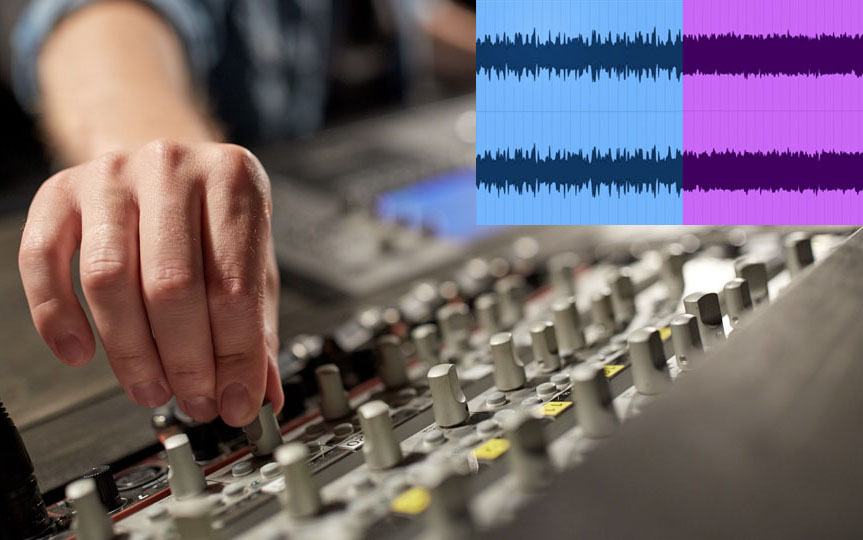In my previous article (here), I focused on the basics of compression, looking at snapshots of what’s happening with the ratio, threshold and gain reduction. Attack and release times were also discussed, since audio signals change over time and compressors can work with the natural changes that happen in a signal’s amplitude.
Just because we have a tool available, however, doesn’t mean it has to be used all the time. Compression can definitely be misused and get us into trouble. With that in mind, let’s look at ways to use compression properly as well as how to avoid mistakes that can cause a “sound tech solo.” (A sound tech solo is defined as that moment when the tech draws attention to him/herself through feedback, improperly muted or unmuted microphones, or other audio blunders.)
Music vocals. If you learn nothing else about compression, learn how to compress vocals properly. The human voice is the most important input that we amplify at church, and intelligibility is a critical component of a successful sound reinforcement job. The human voice, however, is quite dynamic – there’s a broad range of levels that are necessary to sing properly. You can’t just tell the singer to sing more consistently for your mix.
For starters, make sure you’ve got a strong signal from the preamp and that the singer is feeling comfortable in their monitor mix. Set the EQ to make it feel natural, making sure to engage the high-pass filter to take care of plosives and pops. If these other stages are messed up, it will impact the way the compressor behaves – and you definitely won’t like it.
Next, choose a medium ratio between 3:1 and 4:1 and start with the threshold up all the way. Select an attack time of 15 milliseconds (ms) if you want peak mode or 6 ms if you’re in RMS mode. For most vocals, I like a release time of about 250 ms. Or you can choose auto-mode for the attack and release if the compressor has it. There’s no shame in letting the tool do its job.
Now, as the vocalist sings, bring down the threshold until attaining an average of 3 to 5 dB of gain reduction. To get the signal back up to the level it was before, use the makeup gain to boost it. If you’re unsure of how much gain to add, make note of where the fader is and push it up until it’s at the same average level it was before you lowered the threshold. Look at how much distance you traveled on the fader’s scale, and add about that much makeup gain, pulling the fader back to where it was before.
Then, do a quick A/B test to make sure the compressor and makeup gain isn’t adding to or decreasing the average level by bypassing the compressor and engaging it again. There will be some level difference, but we’re trying to minimize it so we can really evaluate what’s going on with the compressor.
You should notice that the quieter parts of the phrases are louder and the emphasized notes of the song are more tamed. This is what is needed to keep the vocal loud and on top of a big, full mix.
Now let’s test and see what it sounds like when we’ve applied too much gain reduction. We’re trying to train our ears to identify the “weird” sound of having our threshold too low, so lower the threshold until you start to notice artifacts (unintended sound manipulation) from the compression.
There may need to be a lot more makeup gain to still really hear the signal, and it could possibly create a feedback situation by raising the noise floor that much. What you’re listening for is how the vocal gets “crunchy” and/or consonant sounds that are out of balance with the vowel sounds (if the release is very fast), as well as breaths that are louder than the words. As you lower the threshold and listen for those artifacts, take a look at the gain reduction meter and note what it’s saying. This can be a quick visual cue that you’ve compressed too much, and it’s more helpful than noting the threshold.
The reason to keep an eye on the gain reduction meter is that sometimes the input level changes. Singers tend to sing with a lot more energy during the service compared to sound check. They’re more warmed up and they respond to the energy of a full room. The increased input means increased gain reduction. By keeping an eye on gain reduction, we can quickly and visually identify if they’re singing louder and raise the threshold accordingly.
On the flip side, if we’re seeing much less gain reduction than we expect for how loud the singer should be singing, we know that the input signal is quieter. This could be a problem with the mic or the singer, but either way, it clues us in to investigate further.
Spoken word. Inputs for people speaking can benefit from compression as well, though they need slightly different treatment than singers. Speaking tends to be much less dynamic of an input than singing, though there are speakers who utilize the full dynamic range of their voice, going from whispering to shouting.
For calmer speakers, just a little bit of gain reduction can help to keep their voices more consistent and intelligible, especially in an environment with a lot of acoustic reflections. I typically aim for 1 to 3 dB of gain reduction most of the time, and I speed up the release time to 50 to 100 ms. Since the syllables of speaking are so much shorter than singing with held-out notes, the faster recovery time helps to balance out those phrases and words a bit better.
Bass. While compression isn’t necessary on every instrument, I always compress the bass guitar. I have a saying that’s served me well over the past 20 years: “It’s all about the low end. When you get that right, everything else falls into place.” The bass is the foundation of the mix and compressing it can help it sustain and provide the control needed to keep the mix full.
The bass also provides a great opportunity to hear what’s happening with the release time. Again, start with a strong signal from the preamp and correct any glaring problems with EQ. It’s easier to EQ the bass after applying compression so you don’t have to chase around the level in the mix.
Choose a medium ratio (3:1 or 4:1) and start with the threshold up. Set the attack time to about 20 ms and the release time at 500 ms. As with vocals, start to lower the threshold until you get about 5 dB of gain reduction on average. If the musician is playing quicker notes, adjust the release time faster.
This can even reveal any level difference between notes. If the bass player is playing more whole notes, adjusting the release time slower can help push up the tail-end of those notes, giving more sustain to the instrument.
How do you know if you’ve gone too far with gain reduction on the bass? Bass can take a lot of gain reduction without sounding weird, but if it starts to feel like an on-off switch with no “lift” from the verse to the chorus of a song, you may have lowered the threshold too far.
If you can master compression on these three types of inputs, your mixes will take a giant step toward being more consistent and enjoyable to listen to. You can avoid the comments that people couldn’t hear the vocal, or the vocal was too loud and in front of the mix. You can get the bass to feel consistent and form a solid foundation for the rest of your mix.
And you can start to apply your new-found skill of compressing inputs to other parts of the mix, getting control and shaping the tone in ways you couldn’t without a compressor





















